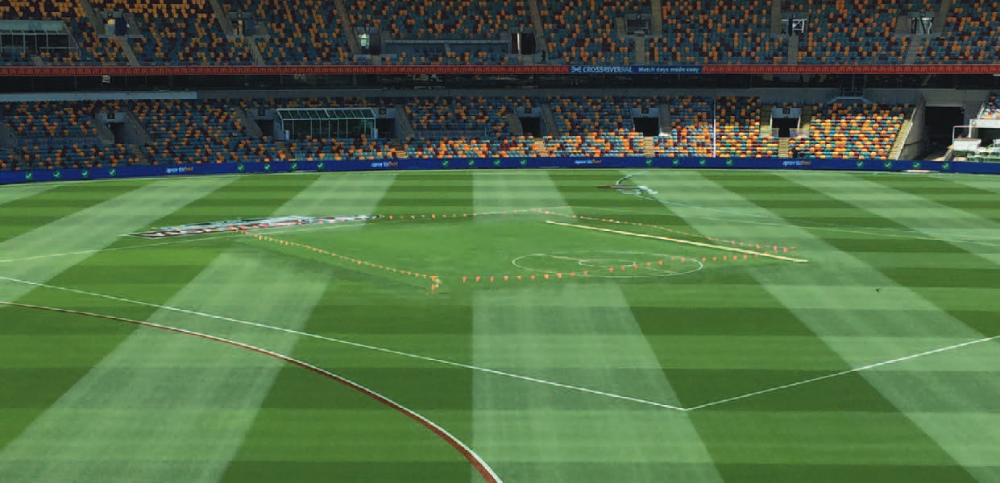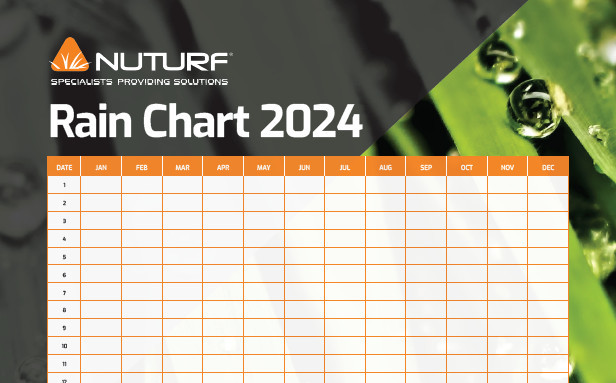Managing Soil Compaction in Turf
What is soil compaction?
Soils are a three phase system, comprising of air, water and solid phases. The air and water component of the soil make up around 50% in the form of pore space, with the remaining 50% of the soil as the solid phase, comprising of mineral and organic materials. Soil compaction is a reduction in pore space due to a consolidation of the solid phase, resulting in increased density and reduced porosity.
The consolidation of the soil generally occurs when downwards pressure is placed on the turf surface. In a sportsturf situation high surface activity has a major impact on compaction, particularly on greens where there is little foliar vegetation to buffer the force of surface activity. This usually occurs in the form of human (staff, players) or vehicular (mowers, carts, etc.) traffic. McIntyre & Jakobsen (1998) estimate that about 99.9% of all soils used in turfgrass construction have the ability to compact under load, and that even soil which would be considered straight sand has the potential to compact.
What are the causes of soil compaction?
Heavy play and intensive maintenance practices on sportsturf apply hard and prolonged downwards pressure on the soil profile. In addition to downwards forces, many sports will also generate horizontal or sliding forces along the turf surface, compacting soil in a sideways motion and creating a slick that reduces water infiltration and root penetration.

In sportsturf, these surface activities are generally unavoidable, and so the focus should generally be placed on altering the characteristics of the soil with the view of making it less prone to compaction. Some factors that play an important role in the compaction potential of a soil are:
-
Fine particles present in the soil can block pores, reducing porosity. These particles may be organic (e.g. plant matter) or mineral (e.g. clay particles) and may be inherent in the soils’ natural makeup, or may have been contributed from silt laden irrigation water, or by wind or traffic.
-
The presence of excess water in the soil profile may be due to poor infiltration rate, or excessive organic matter or elevated fine particles. Excessive water creates issues when it begins to displace air porosity from the profile, and becomes bound to soil particles as hygroscopic water (Handreck & Black 2010).
-
Low microbial activity will result in reduced break down of organic matter and in turn poor nutrient cycling. This leads to excessive organic matter in the profile which can clog pores and cause layering.
Minimising or eliminating these factors is vital in reducing the compaction or compaction potential in sportsturf soils.
What are the effects of compacted soil?
As the turfgrass plant (like all other plants) requires gas exchange to occur in the root zone, reduced porosity will have a negative impact on plant growth and in turn reduce turf quality. As compaction increases in a soil, it becomes harder and harder for the turf plant to send out feeder roots as the physical resistance it faces from the hard soil makes it difficult. This requires more energy for the plant to expend to source water and nutrients, and results in a stunted root system.
Guidelines exist to ensure that the subsurface of a soil profile is within the optimum range for root growth. This can be measured in psi with a penetrometer. With a healthy root system required for optimum foliar growth, this then results in poor foliar health and surface quality. Not only will the plant suffer from a harder soil, but the playability and player safety of the turf surface may also be compromised. Best practice guidelines exist for the surface hardness of sportsfields from a player safety point of view, and these can be assessed using a Clegg Hammer to measure the surface hardness in gravities.
Mechanical aeration for compacted soil
Physical alleviation of a compacted soil through activities such as coring, slicing and verti-draining is often the fastest relief from compaction. This will immediately break up a compacted soil, allowing plant roots and soil microbes access to oxygen and will increase water infiltration. While this will offer an immediate result, it will not fix the problem, in the long term. If pore spaces are clogged with organic matter and water is heavily bound to the soil particles, then it is likely that the soil will return to its original, compacted state.
Generally speaking, coring or solid tyning will only have an effect on about 10% of the soil profile, with the other 90% remaining compacted. To reduce compaction throughout the entire profile, it is likely necessary to apply a specialist product designed to aerate the profile.
Stamina Relieve for compacted soil
Stamina Relieve is a soil-amending polymer, which effects changes in the surface tension of the hygroscopic (bound) water in the soil. The ionic nature of soils, and the polarized molecular structure of water results in very strongly bonded (hygroscopic) water in the soil system. By penetrating to vertical depths of over a meter, and by acting upon the bound water (unlike other soil surfactants which act on surface water), Stamina Relieve demonstrates long-lasting improvements in growing conditions and water management processes within the soil. The breakdown of adhesion in soil structures produces a more open, better-aerated soil profile. As a consequence, the treated soil is more oxygenated, which results in an improved playing surface (particularly in the winter months). In addition, improved oxygenation allows for greater stimulation in soil microbiology and better nutrient utilisation efficiency.

The active constituent of Stamina Relieve is Ammonium Lauryl Sulphate (48%), with the ammonium component assisting in particle flocculation. This helps to aggregate the soil, further improving porosity and water movement. One of the most readily observed results of application of Stamina Relieve is an improved water infiltration rate. By breaking down the adhesion that creates compaction of soil, Stamina Relieve readies the soil for much deeper and faster influx of water.
The increased penetration of water results in reduced run-off, evaporation, and standing water in previously wet areas. Another feature that sets Stamina Relieve apart from other surfactants is the fact that it will not bind to the waxy organic coatings on soil particles. Many other surfactants are designed to bind to these waxy coatings to improve their longevity in the soil. As a result, Stamina Relieve is extremely efficient at removing water that is bound to these coatings, where most surfactants become bound themselves.
The key benefits of Stamina Relieve are as follows:
- Improve aeration and permeability in the soil.
- Enhance water availability.
- Improve water infiltration
- Ideal for use in the winter months to keep the root zone from becoming over saturated.
- Optimises air:water ratios.
- Ideal for tank mixing with other Stamina Surfactants.
- Eliminates wet and dry spots.
- Significantly increases water movement
- Non-toxic and environmentally safe.
- Low use rates, allowing for economical treatment over larger areas.















